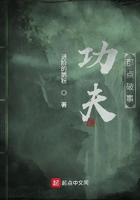Some are smitten with semiparalysis. A Cetonia-grub, pricked away from the centre on a level with the fore-legs, has her right side flaccid, spread out, incapable of contracting, while the left side swells, wrinkles and contracts. Since the left half no longer receives the symmetrical cooperation of the right half, the grub, instead of curling into the normal volute, closes its spiral on one side and leaves it wide open on the other. The concentration of the nervous apparatus, poisoned by the venom down one side of the body only, a longitudinal half, explains this condition, which is the most remarkable of all.
There is nothing to be gained by multiplying these examples. We have seen pretty clearly the great variety of results produced by the haphazard sting of a Bee's abdomen; let us now come to the crux of the matter. Can the Bee's poison reduce the prey to the condition required by the predatory Wasp? Yes, I have proved it by experiment;but the proof calls for so much patience that it seemed to me to suffice when obtained once for each species. In such difficult conditions, with a poison of excessive strength, a single success is conclusive proof; the thing is possible so long as it occurs once.
A female Ephippiger is stung at the median point, just a little in front of the fore-legs. Convulsive movements lasting for a few seconds are followed by a fall to one side, with pulsations of the abdomen, flutterings of the antennae and a few feeble movements of the legs. The tarsi cling firmly to the hair-pencil which I hold out to them. I place the insect on its back. It lies motionless. Its state is absolutely the same as that to which the Languedocian Sphex (Cf. "Insect Life": chapter 10.--Translator's Note.) reduces her Ephippigers. For three weeks on end, I see repeated in all its details the spectacle to which I have been accustomed in the victims extracted from the burrows or taken from the huntress: the wide-open mandibles, the quivering palpi and tarsi, the ovipositor shuddering convulsively, the abdomen throbbing at long intervals, the spark of life rekindled at the touch of a pencil. In the fourth week, these signs of life, which have gradually weakened, disappear, but the insect still remains irreproachably fresh. At last a month passes;and the paralysed creature begins to turn brown. It is over; death has come.
I have the same success with a Cricket and also with a Praying Mantis. In all three cases, from the point of view of long-maintained freshness and of the signs of life proved by slight movements, the resemblance between my victim and those of the predatory insects is so great that no Sphex and no Tachytes would have disowned the product of my devices. My Cricket, my Ephippiger, my Mantis had the same freshness as theirs; they preserved it as theirs did for a period amply sufficient to allow of the grubs' complete evolution.
They proved to me, in the most conclusive manner, they prove to all whom it may interest, that the poison of the Bees, leaving its hideous violence on one side, does not differ in its effects from the poison of the predatory Wasps. Are they alkaline or acid? The question is an idle one in this connection. Both of them intoxicate, derange, torpify the nervous centres and thus produce either death or paralysis, according to the method of inoculation. For the moment, that is all. No one is yet able to say the last word on the actions of those poisons, so terrible in infinitesimal doses. But on the point under discussion we need no longer be ignorant: the Wasp owes the preservation of her grub's provisions not to any special qualities of her poison but to the extreme precision of her surgery.
A last and more plausible objection is that raised by Darwin when he said that there were no fossil remains of instincts. And, if there were, O master, what would they teach us? Not very much more than what we learn from the instincts of to-day. Does not the geologist make the erstwhile carcases live anew in our minds in the light of the world as we see it? With nothing but analogy to guide them, he describes how some saurian lived in the jurassic age; there are no fossil remains of habits, but nevertheless he can tell us plenty about them, things worthy of credence, because the present teaches him the past. Let us do a little as he does.
I will suppose a precursor of the Calicurgi (The Calicurgus, or Pompilus, is a Hunting Wasp, feeding her larvae on Spiders. Cf. "The Life and Love of the Insect": chapter 12.--Translator's Note.)dwelling in the prehistoric coal-forests. Her prey was some hideous Scorpion, that first-born of the Arachnida. How did the Hymenopteron master the terrible prey? Analogy tells us, by the methods of the present slayer of Tarantulae. It disarmed the adversary; it paralysed the venomous sting by a stroke administered at a point which we could determine for certain by the animal's anatomy. Unless this was the way it happened, the assailant must have perished, first stabbed and then devoured by the prey. There is no getting away from it: either the precursor of the Calicurgi, that slaughterer of Scorpions, knew her trade thoroughly, or else the continuation of her race became impossible, even as it would be impossible to keep up the race of the Tarantula-killer without the dagger-thrust that paralyses the Spider's poison-fangs. The first who, greatly daring, pinked the Scorpion of the coal-seams was already an expert fencer; the first to come to grips with the Tarantula had an unerring knowledge of her dangerous surgery. The least hesitation, the slightest speculation;and they were lost. The first teacher would also have been the last, with no disciples to take up her work and perfect it.













